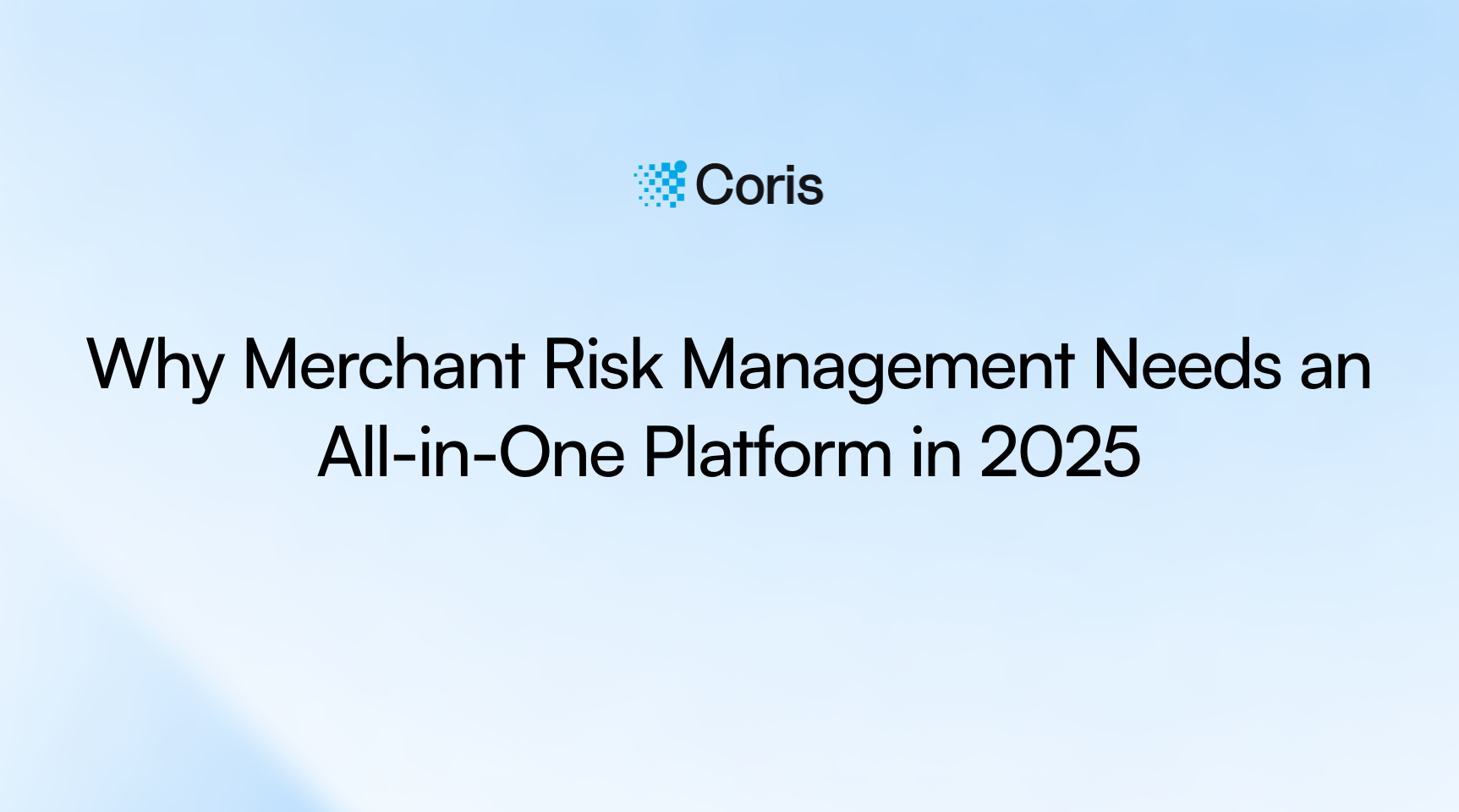5 Hidden Payment Risks—and How AI Blocks Them
Discover 5 hidden payment risks costing businesses millions and learn how AI-powered detection blocks them for superior fraud prevention and compliance.
Risk management is broken in 2025—fragmented tools and manual reviews can’t keep up. Discover how Coris unifies onboarding, underwriting, monitoring, and fraud detection into one AI-powered risk infrastructure.

The way we manage risk is broken. Fragmented tools. Reactive compliance. Manual reviews that delay decisions and still miss the signals that matter.
In 2025, that’s no longer viable. As payment ecosystems scale and fraud gets smarter, platforms need infrastructure that adapts – not just audits.
This isn’t about features. It’s about building intelligent, integrated systems that understand risk across the lifecycle: onboarding, underwriting, transaction monitoring, and fraud detection. Here's what that shift looks like – and why it matters.
Managing risk in silos creates blind spots – and those blind spots cost money, customers, and compliance.
In 2025:
Legacy stacks can’t keep up. They flood analysts with false positives, delay decisions, and leave platforms exposed.
Modern platforms are consolidating risk tools into unified systems – not for convenience, but to build a loop of continuous learning and action.
An all-in-one infrastructure connects:
This isn’t piecing together vendors. This is designing a platform where intelligence travels with the merchant.
When risk signals flow across a single platform:
Integrated platforms enable smarter decisioning, faster remediation, and better customer experiences – especially for high-risk merchants.
AI-Driven Monitoring
Detect fraud before it lands. AI models analyze transaction patterns, behaviour, and context to flag threats in real time – with up to 95% accuracy ([1], [3]).
Chargeback Management
Tools designed to resolve disputes proactively – cutting loss and churn.
Compliance by Design
From PCI DSS to AML and GDPR, integrated infrastructure simplifies audits and eliminates manual effort ([1]).
High-Risk Merchant Support
Behaviour-aware risk scoring, custom rules, and embedded monitoring – so platforms can onboard faster without opening exposure.
Built for Scale
Modern APIs, multi-currency support, and seamless integration across payment channels.
Managing merchant risk isn’t about bolting on more tools. It’s about rethinking how platforms interact with risk altogether.
At Coris, we’re helping teams replace static checks with dynamic infrastructure – infrastructure that learns, scales, and drives smarter decisions.
Want to see how it works? Request a demo →